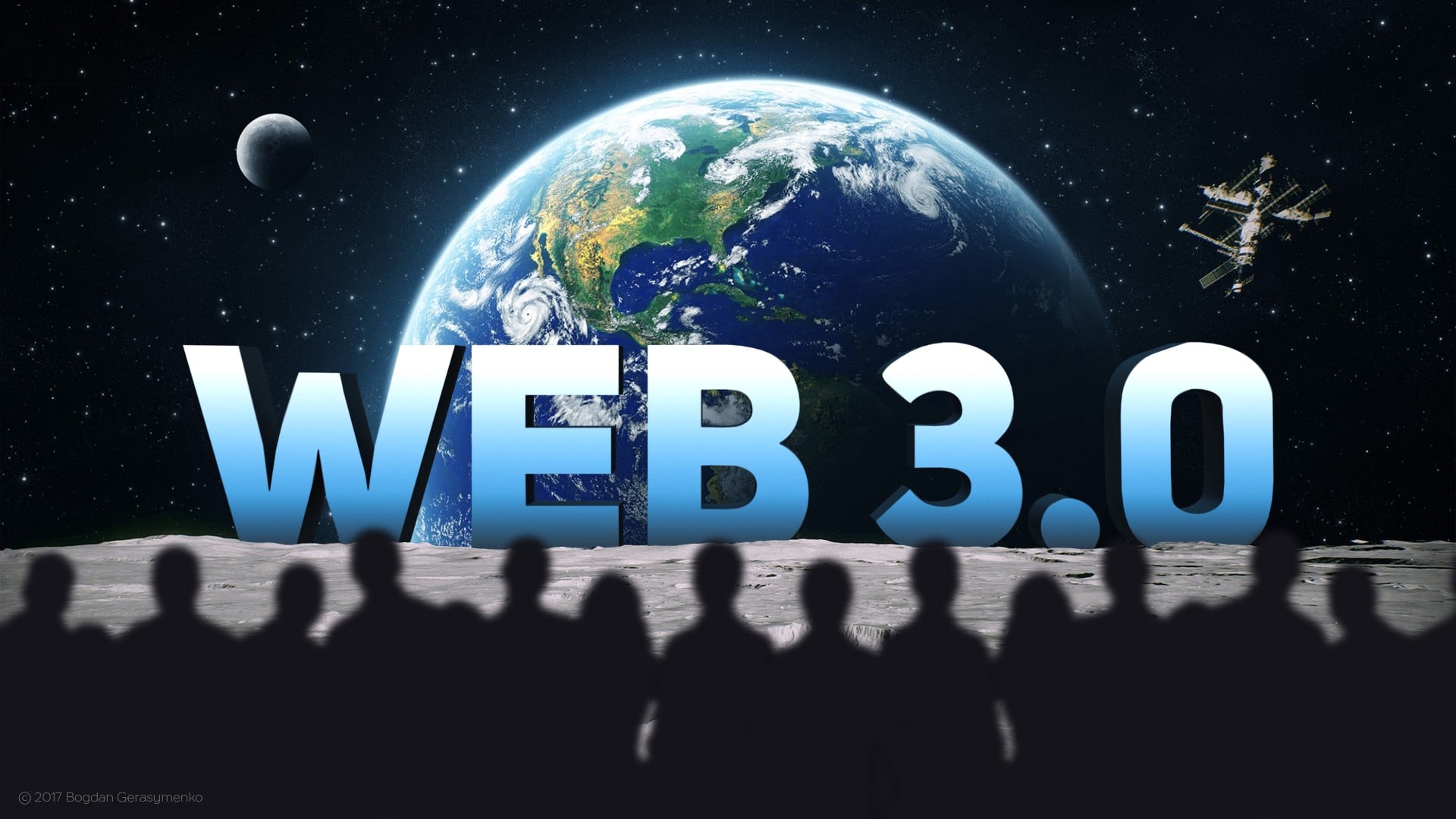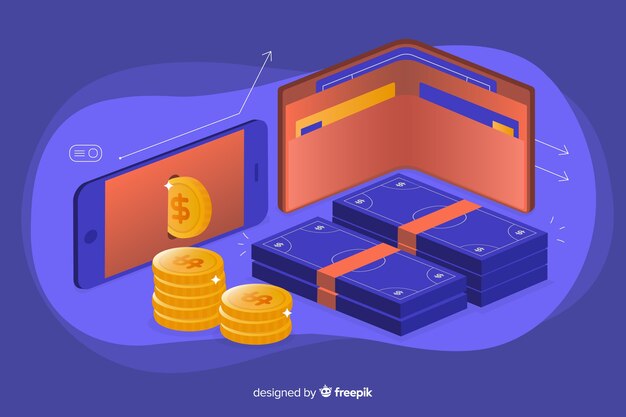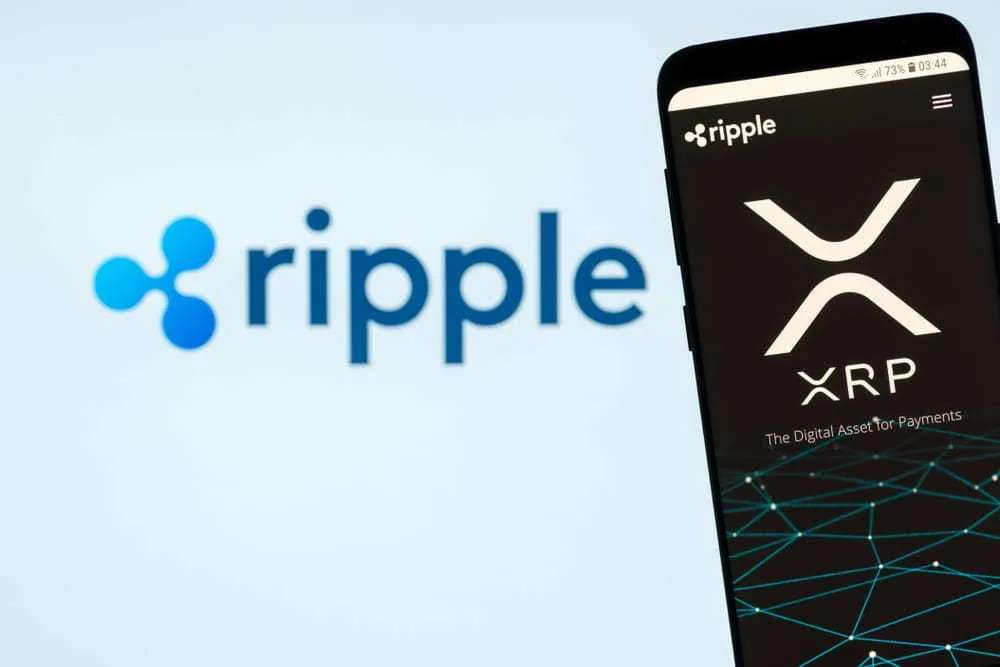What Is Polkadot Guide to Web 3.0? Exploring Polkadot The Gateway to Web 3.0

The evolution of the digital landscape is paving the way for a new era characterized by enhanced connectivity, interoperability, and user sovereignty. As traditional frameworks struggle to meet the demands of an increasingly sophisticated audience, innovative solutions are emerging to redefine how we interact with technology and each other. A focus on decentralization and collaboration is at the heart of this transformation, promising a more inclusive online environment.
At the forefront of these advancements is a groundbreaking platform designed to connect diverse blockchain ecosystems. This unique approach allows for seamless communication and data exchange between different networks, fostering a sense of unity across the fragmented world of digital assets. By enabling a more integrated experience, users can reap the benefits of various technologies without being confined to a single solution.
With a vision rooted in empowering individuals and communities, this framework not only enhances technological capabilities but also prioritizes security and scalability. It aims to eliminate barriers, encouraging creativity and innovation, ultimately reshaping how we understand trust and value in the online space. The implications of this groundwork extend far beyond mere transactions; they have the potential to revolutionize entire industries and redefine the concept of digital interaction.
Understanding Polkadot’s Unique Architecture
The architecture of this innovative blockchain system sets it apart in the rapidly evolving digital landscape. By allowing multiple blockchains to interoperate, it facilitates a new paradigm of connectivity and scalability. This structure not only enhances efficiency but also optimally addresses the limitations faced by traditional blockchain solutions.
Key Components of the Architecture
The framework consists of several integral parts, each playing a vital role in its ecosystem. These components work cohesively to create a robust network that supports diverse functionalities.
| Component | Description |
|---|---|
| Relay Chain | The main chain that ensures security and consensus across all connected parachains. |
| Parachains | Individual blockchains that run parallel to the relay chain, tailored for specific applications. |
| Bridges | Connections that enable interaction between different blockchain networks, expanding the ecosystem. |
Benefits of the Architecture
This design offers several advantages, including enhanced scalability, increased transaction throughput, and the ability to upgrade without hard forks. Such features make it an appealing option for developers looking to create interconnected blockchain solutions.

The Importance of Interoperability in Blockchain
Interoperability is a fundamental concept that highlights the necessity for different blockchain networks to communicate and share information seamlessly. This capability enables diverse systems to work together, fostering a more inclusive and efficient digital ecosystem. As the blockchain landscape matures, the significance of this interconnectedness becomes increasingly apparent, influencing not only technological advancements but also user experience and overall adoption rates.
Enhancing Collaboration Across Platforms
The ability for various blockchain networks to interoperate allows for collaboration beyond isolated frameworks. This collaborative environment unlocks new opportunities for innovation, as projects can leverage the strengths of multiple blockchains. Furthermore, users can benefit from integrated services that enhance functionality and usability, streamlining processes that would otherwise require multiple separate platforms.
Boosting Efficiency and Reducing Fragmentation
Without interoperability, the blockchain space risks becoming a fragmented environment where valuable resources and ideas are siloed. Interconnected networks contribute to greater efficiency, reducing redundancy and optimizing the utilization of technological advancements. By facilitating seamless data exchange and transactions, interoperability empowers organizations to create more impactful solutions and drives broader adoption.
| Benefit | Description |
|---|---|
| Innovation | Fosters collaboration between diverse projects, leading to new advancements. |
| User Experience | Streamlines processes, allowing easier access to various services. |
| Efficiency | Reduces redundancy across platforms, optimizing resource use. |
| Adoption | Drives user acceptance through improved functionalities and use cases. |
How Polkadot Facilitates Decentralized Applications
The evolution of technology has paved the way for innovative solutions that empower developers to create applications free from centralized control. This ecosystem supports the emergence of various projects, helping to foster collaboration and interoperability among them. By leveraging unique architectural features, this framework enhances the development and deployment of decentralized applications, allowing for a more adaptive and resilient infrastructure.
Multichain Architecture
The utilization of a multichain architecture is a significant aspect of this system. It enables different blockchains to interconnect seamlessly, allowing developers to build custom chains tailored to specific use cases. This versatility permits applications to harness unique functionalities, enhancing overall performance while maintaining security and scalability. As a result, the barriers that often hinder collaboration between distinct systems are significantly lowered.
Shared Security
Another key element lies in the concept of shared security. The framework offers a centralized security model where multiple projects benefit from the robust security measures implemented across the network. This feature reduces the risks generally associated with individual chains and encourages new projects to launch with confidence. By ensuring that all participants enjoy consistent protection, it fosters a healthy environment for innovation and growth.
In conclusion, the design principles of this ecosystem not only support developers in creating powerful decentralized applications but also nurture a collaborative atmosphere where creativity can flourish. The integration of multichain capabilities along with a secure foundation truly empowers the next generation of digital applications.

Key Features Driving Web 3.0 Adoption
The evolution of the internet towards a more decentralized, user-centric model is powered by several crucial characteristics. These elements not only enhance user experience but also foster trust, security, and ownership among participants. Understanding these features is essential for grasping the transformation happening in digital ecosystems.
Core Characteristics
- Decentralization: This principle removes reliance on centralized authorities, distributing control among users. It allows for greater transparency and reduces the risk of censorship.
- Interoperability: The ability of different platforms and protocols to communicate and work together seamlessly enhances the functionality and user experience.
- Self-sovereignty: Users gain full control over their data, enabling them to manage their digital identities and assets without intermediaries.
- Incentivization: Participants are rewarded for their contributions and engagement, encouraging a more active and supportive community.
- Smart Contracts: Automated agreements that execute actions based on pre-defined conditions enhance efficiency and trust in transactions.
Impactful Innovations
- Decentralized Finance (DeFi): Financial services that operate without traditional banks provide inclusive access to financial resources.
- Non-Fungible Tokens (NFTs): Unique digital assets that represent ownership, allowing creators and artists to monetize their work directly.
- Distributed Autonomous Organizations (DAOs): Community-governed entities that empower members to participate in decision-making processes.
These pivotal features lay the groundwork for a new digital era, where users can engage with technology in a more secure, equitable, and innovative manner. As these elements continue to evolve, they will play a significant role in determining the trajectory of online interactions and governance.
The Role of Governance in Polkadot Network
Effective decision-making serves as a cornerstone for any successful ecosystem, particularly in the realm of decentralized technologies. Within this innovative network, governance frameworks establish the ways participants can influence the direction and evolution of the system. These frameworks empower stakeholders to suggest changes, vote on proposals, and implement upgrades, thereby ensuring that the platform remains adaptive and aligned with the needs of its community.
Decentralized governance minimizes reliance on centralized entities, allowing users to have a more significant say in the platform’s development. Through mechanisms such as on-chain voting and community proposals, individuals can collaboratively shape the future of the system. This inclusive approach fosters a sense of ownership among stakeholders, encouraging active participation and engagement.
Furthermore, the governance structure is designed to be flexible, enabling the network to respond effectively to challenges and opportunities. By integrating mechanisms for regular updates and adaptations, the system can evolve alongside technological advancements and user feedback. This dynamic nature ensures that the network remains relevant in a rapidly changing digital landscape.
Ultimately, the emphasis on a robust governance model signifies a commitment to transparency, accountability, and collective progress. By empowering individuals to take part in the decision-making process, the ecosystem not only enhances its resilience but also builds trust among its participants, paving the way for a vibrant and sustainable digital future.
Future Prospects of Polkadot Ecosystem
The ongoing evolution of blockchain technology presents exciting opportunities for innovation and collaboration. As different projects proliferate, one particular platform stands at the forefront, promoting interconnected solutions that enhance scalability, security, and usability. The potential for growth within this framework lies in its unique architecture, which fosters diverse applications and seamless interactions among various chains.
As the demand for decentralized applications continues to surge, the ecosystem is poised to attract a plethora of developers, businesses, and users looking to harness its capabilities. The robust architecture allows for easy integration of new parachains, expanding the overall functionality and adaptability. This flexibility is crucial for ensuring longevity and relevance in an ever-changing digital landscape.
Furthermore, the community-driven governance model enhances user engagement and ensures continuous improvement. As stakeholders gain a voice in decision-making processes, the ecosystem can evolve in accordance with the needs and desires of its participants. This collective approach fosters a resilient environment where innovation can thrive.

In light of these factors, the future of this ecosystem appears promising. With strategic partnerships, technological advancements, and a strong emphasis on user experience, the platform is well-positioned to be a leader in the next generation of decentralized systems. The journey ahead is ripe with possibilities, paving the way for a more interconnected and efficient digital realm.
Q&A: What Is Polkadot? Guide to Web 3.0
What is Polkadot and how does it work?
Polkadot is a multi-chain network designed to facilitate the interoperability of different blockchains. At its core, Polkadot allows various blockchains to transfer messages and value in a trust-free fashion. The network operates through several key components: the Relay Chain, which provides security and consensus, and parachains, which are specialized, application-specific blockchains that plug into the Relay Chain. This architecture allows for scalability, flexibility, and the ability to upgrade without forking the entire network, making it a groundbreaking player in the evolution of decentralized applications and Web 3.0.
What role does Polkadot play in the development of Web 3.0?
Polkadot plays a crucial role in the development of Web 3.0 by promoting a decentralized internet where users have control over their data and digital identities. It enables different blockchains to operate collaboratively, promoting interoperability and functionality across various platforms. This environment fosters innovation and allows developers to create decentralized applications (dApps) that can interact seamlessly with different networks, thereby enhancing user experience and engagement. Furthermore, Polkadot’s governance model empowers users to participate in decision-making processes, ensuring that the network evolves according to the community’s needs, which is a fundamental principle of Web 3.0.
What are the benefits of using Polkadot for developers?
Developers benefit from using Polkadot in several significant ways. Firstly, the ease of building and deploying parachains allows for more specialization in blockchain applications, enabling developers to focus on specific use cases without starting from scratch. Secondly, by leveraging Polkadot’s shared security model, developers can build on a secure and established network, reducing the risks associated with smaller, less secure chains. Additionally, Polkadot’s interoperability allows developers to create applications that can interact with multiple chains, enhancing the functionality and reach of their projects. Lastly, the network’s innovative governance structure provides developers with a voice in the future direction of the platform, which encourages a collaborative ecosystem.
How does Polkadot ensure security among its connected blockchains?
Polkadot ensures security among its connected blockchains through its unique shared security model, where the Relay Chain acts as the central layer that provides a security umbrella for all parachains. Each parachain benefits from the consensus mechanism of the Relay Chain, which means that all chains connected to Polkadot share the same security guarantees. This allows smaller or newer blockchains to maintain high-security standards without needing to establish their own robust security frameworks. Furthermore, Polkadot employs a set of validators who are incentivized to secure the network by validating the transactions across different chains, thus enhancing overall trust and security within the ecosystem. This structure not only improves safety but also facilitates scalability, as multiple chains can operate alongside one another while being secured through the same validators.
What is Polkadot, and how does it work?
Polkadot is a scalable blockchain platform designed to enable the seamless connection of multiple blockchains. It uses a proof-of-stake consensus algorithm and features parachains, which are specialized blockchains that run in parallel, to enhance scalability and interoperability within the Polkadot network.
Who is Gavin Wood, and what is his role in Polkadot?
Gavin Wood is the co-founder of Ethereum and the founder of Polkadot. He also leads Parity Technologies and the Web3 Foundation, which are central to the development and governance of Polkadot. His vision for a decentralized web 3.0 led to the creation of this innovative blockchain platform.
What makes Polkadot different from Bitcoin and Ethereum?
Unlike Bitcoin and Ethereum, which operate as single blockchains, Polkadot enables interoperability between blockchains. Its multi-chain architecture allows secure data exchange and shared security, making it ideal for complex applications and scalable solutions in the blockchain industry.
How does staking work in the Polkadot blockchain?
Staking in Polkadot involves locking DOT tokens to support network security and operations. DOT holders can act as nominators, delegating their tokens to validators who secure the network and validate transactions. In return, they earn staking rewards.
What are parachains, and why are they significant to Polkadot?
Parachains are independent blockchains connected to the Polkadot network, each optimized for specific use cases. They benefit from Polkadot’s shared security and interoperability, allowing developers to create specialized applications without building entire blockchains from scratch.
How does Polkadot ensure the security of the network?
Polkadot uses a robust proof-of-stake consensus algorithm, which involves validators, nominators, and collators to maintain security. By distributing network security across parachains, Polkadot achieves high levels of safety while remaining scalable and efficient.
What is the role of DOT tokens within the Polkadot blockchain?
DOT tokens serve as Polkadot’s native cryptocurrency, used for governance, staking, and paying network fees. DOT holders can participate in decision-making processes, such as upgrades and feature additions, ensuring decentralized governance of the platform.
How does Polkadot contribute to the development of a decentralized web 3.0?
Polkadot provides a framework for creating interoperable and decentralized applications, enabling seamless communication between blockchains. By addressing scalability and security issues, it lays the foundation for a decentralized web 3.0 ecosystem that moves beyond traditional Web 2.0 limitations.
What are the key goals of the Polkadot project?
Polkadot aims to facilitate interoperability, scalability, and security for blockchain networks. It seeks to enable cross-chain communication, reduce network congestion, and provide a foundation for innovative blockchain development through its next-generation platform.
What is the future outlook for Polkadot in the blockchain industry?
Polkadot is positioned as a leading platform in the blockchain industry due to its focus on scalability, interoperability, and decentralized governance. With increasing adoption of blockchain solutions and ongoing parachain developments, Polkadot is expected to play a significant role in the evolution of decentralized technologies.


